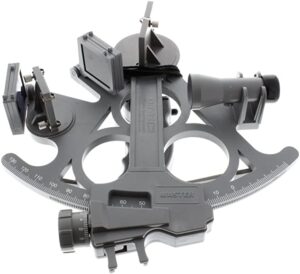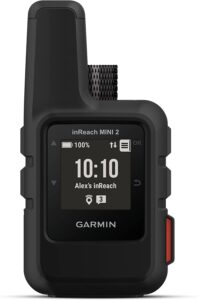Navigation has been a crucial aspect of human life since the earliest days of seafaring and exploration. Over the centuries, various methods and techniques have been developed to help sailors and navigators determine their position and direction. In this blog post, we will look at some of the most important milestones in the evolution of navigation, from celestial observation to GPS technology.
Celestial Navigation One of the earliest forms of navigation was celestial navigation, which involved using the positions of the stars and the sun to determine one’s location. This method was widely used by sailors for thousands of years and was instrumental in allowing them to embark on long voyages across the open sea. With the advent of more sophisticated instruments, such as the sextant, sailors were able to make more accurate observations and calculations, leading to greater success in their voyages.
The Davis Deluxe Mark 25 Sextant is a very capable navigational instrument priced below $300
Dead Reckoning with Charts Another important development in navigation was the use of charts and dead reckoning. Dead reckoning is a method of navigation in which the navigator estimates his position based on the speed and direction of the ship, taking into account any changes in course or speed. Charts were used to plot these estimates and to help navigators determine their position relative to landmarks, such as coastlines and islands.
GPS Navigation The most recent milestone in the history of navigation is the widespread use of GPS technology. GPS, or Global Positioning System, is a satellite-based navigation system that provides precise location and time information anywhere on the earth. With the widespread availability of GPS devices, navigation has become faster, more accurate, and more convenient than ever before. Whether you are on land, sea, or air, GPS technology makes it possible to determine your location and navigate with confidence.
The Garmin inReach Mini 2 can send and receive communications via satellite and in case of emergency send an Interactive SOS
Navigation has come a long way since the earliest days of celestial observation, and each new development has brought greater accuracy and convenience to navigators and sailors. From dead reckoning with charts to GPS technology, navigation has been shaped by the needs and desires of those who rely on it, and will continue to evolve and improve as new technologies emerge. Whether you are a seasoned navigator or a curious observer, the history of navigation is a fascinating story that speaks to the human desire to explore and understand our world.


